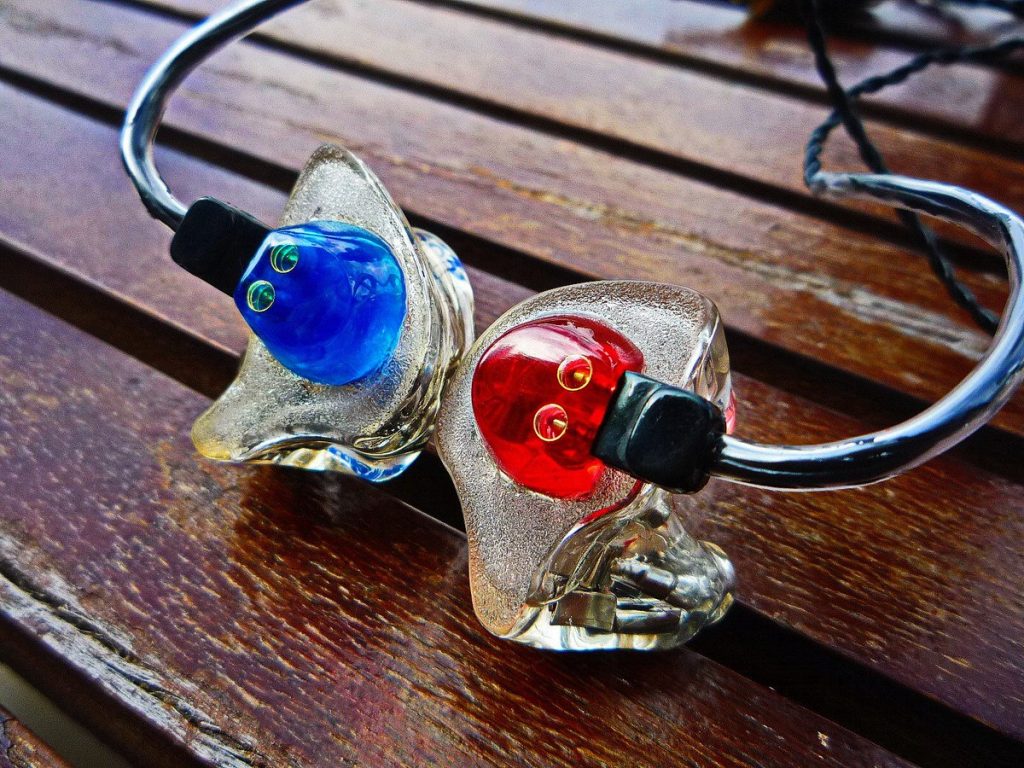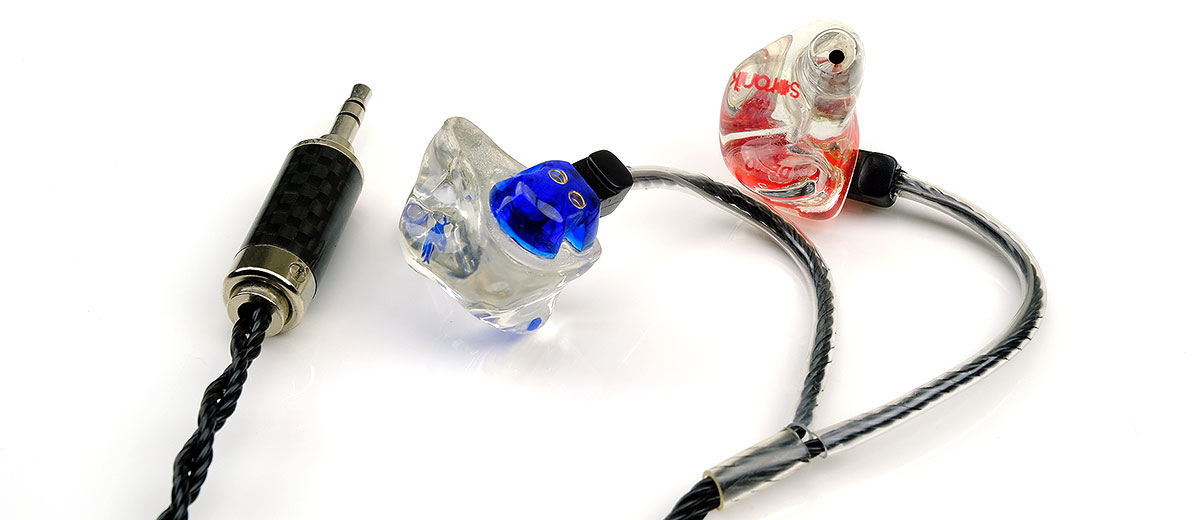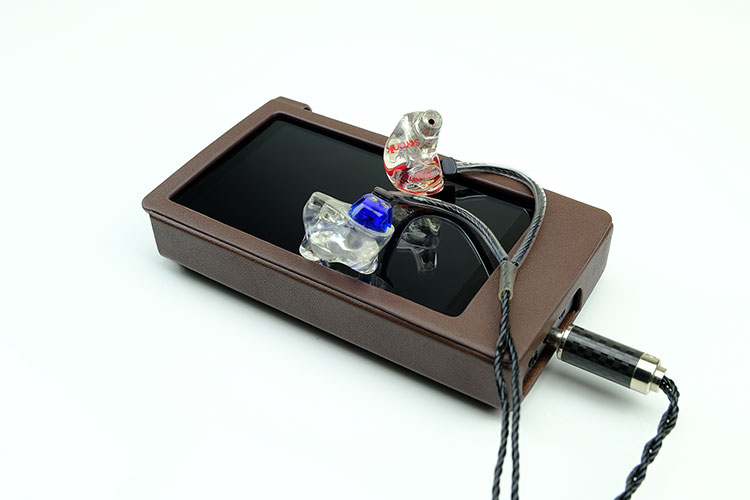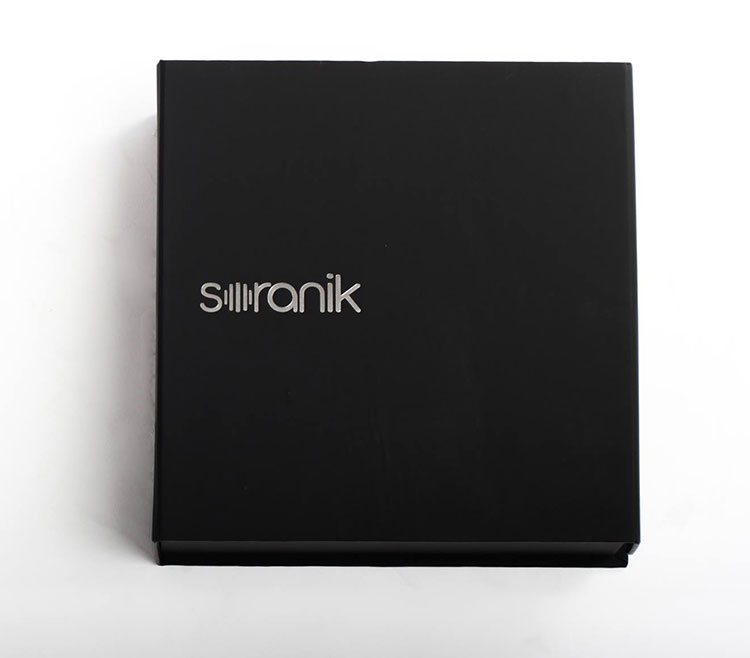Matchability
Efficiency
The SK1 is rated at 20 ohms and 109dB which is not a hugely sensitive rating, at least not compared to similar one BA designs such as the Campfire Audio Orion.
That being said the SK1 does not require significant amping to sound optimal and unlike more sensitive multi-BA variants such as the Orion it is more likely to avoid issues with slightly higher noise floors and background hiss.
DAPs such as the FiiO X5iii, iBasso’s new DX200, and the Cayin i5 also easily handled the SK1 with volume settings around 4-5 steps higher than the Orion, zero noise or background hiss and good dynamics.
Yes, each brought its own tonal tweak to the SK1 but otherwise I never got a sense that I was losing dynamic range or having an overly boosted and warm lower midrange with any of those DAPs in low gain.
Tonal Pairing
A quality amp rather than a powerful amp, be that DAP or a dedicated portable amp will more than suffice for the SK1 both for dynamics, resolution and also the tonal pairing.
The SK1 maybe a colored sound with midrange emphasis but it is not cast in stone and some nuanced changes do occur with some sources depending on the source’s core sound. It also scales somewhat particularly in dynamics and staging with quality amping.
Smartphones
ZTE Axon 7
At the base level, aka smartphones, (ZTE Axon 7 with AK4490), volume control hit around 7/5/10 but the sound was a little thinner than some of the more powerful DAP sources.
It still had a fairly smooth sound but vocals lost a little weight and texture and a slightly brittle and metallic quality crept into the upper mids to lower treble didn’t gel well with me.
Having said that staging was pretty good with respectable width and good instrumental separation as well as above par detail retrieval. I never got the feeling the ZTE pairing was overly compressed sounding so dynamics do not take a huge hit using some smartphone setups.
This combination works best with EDM and trance requiring just a slightly weightier midrange sound for rock.
DAPs
FiiO X5iii
$399
Volume was quite manageable in low gain mode at around 45-60 steps with a nice low noise floor and no noticeable hiss. Unlike the ZTE Axon 7, the presentation was fuller sounding with a weighted mid-bass sound offering good impact, a smooth midrange, and rich vocal performance.
Treble is nothing stellar, it sounds quite shelved down on some tracks and acceptable though laid back on other tracks. Both source and IEM are relaxed profiles for treble so if you like a bit of sparkle and air then this pairing will not deliver it.
With this duo, the focus is on the mid-bass impact and vocal delivery enveloped into a nice warm presentation.
iBasso DX200
$900
Power-wise there are no noise and hiss issues with the SK1/DX200 pairing sitting nicely at 80-90 steps on low gain and the SK1 benefits from the quality reference amp inside the DX200.
The DX200 is the most balanced sounding of the 3 DAPs testing with the SK1 and is the least warm of the three pairings. If anything it has a very natural sound with the most accurate timbre and vocal presentation.
Note weight is a little more neutral on the DX200 and not as weighted. The SK1/DX200 bass is is tighter with excellent mid-bass impact. The top-end, though still relatively relaxed, has more headroom and articulation than the X5iii and i5.
This is the most genre flexible pairing with excellent resolution and the one I would take with me if I wanted to use the SK1 for 90% of my track selection.
Cayin i5
$499
With the Cayin i5 pairing there are no efficiency issues with adequate volume around 25-30 steps and zero noise or background hiss in a low gain setting.
Much like the X5iii the i5 delivers a musical presentation with the SK1 with more of an emphasis on a planted low end and strong mid-range and vocals but unlike the X5iii it has a slightly cleaner edge and better treble extension on the SK1 though not quite as balanced and resolving as the DX200.
Dynamics on this pairing is very good with excellent articulation and a slightly more spacious sound than the X5iii though it is not a night and day contrast but the FiiO does sound a bit more laid back and softer with the SK1 pairing.
Amps
ALO Audio RX
$349
Efficiency
Absolutely excellent portable amp upgrade should you be looking at a stacking solution. The RX’s usually aggressive gain is not so much of a factor with the SK1 pairing so you get low noise, no background hiss but also a bit of wiggle room on the analog pot of the RX for decent volume control, around 40-50% in total.
Tonality
What you get tonally is a real big lift in staging, imaging, and dynamics and pushes the SK1 that bit more showing off what this single driver can do with the horn design. Spatial cues and imaging are precise, producing a much more holographic soundstage than the 3 DAPs offered.
The mids on the SK1 open up with plenty of space for vocals to breathe which is what the SK1 is all about and yet at the same time the low end loses little in the way of impact though tightens up nicely from its slightly looser performance
Lear FSM-02 V2
Efficiency
Using the opamp driven normal amping output of the Lear and much like the RX, I get a very clean, background hiss and noise-free presentation with more than decent microvolume control using the analog pot with the SK1 in low gain mode. Again, the SK1’s slightly lower rating in terms of sensitivity makes portable amping a worthwhile experience.
Tonality – Normal Amp
Tonally this pairing is not as expansive sounding as the RX but it’s a touch warmer and smoother sounding. The big change-up with the Lear is the clarity and control of the bass response adding excellent depth and layering to the SK1’s low-end signature and keeping a nice black background at the same time.
Vocals retain warmth and smoothness also, lacking in sibilance or grain. Staging is slightly narrower than the RX and imaging is a tiny bit more centered but still very natural sounding.
Tonality – Class A Amp
The Lear Class A output surprisingly is also noise-free with the SK1 and something which I was not expecting, even if it was on low gain. You do get slightly less wiggle room on the pot but nothing troubling and too limiting.
Tonally this is wonderful and if you are after a rich smooth coherent presentation and less of a solid-state sound then this is it. The Class A output might only have 4 hours battery life but it is 4 hours of top-notch quality and like the RX pushes the SK1 to optimal levels.
RHA Dacamp L1
Efficiency
The Dacamp L1’s gain setting is perhaps too high for the SK1, even in low gain mode, to have any sense of microvolume control sadly. The most I could get out of it is 1.2 – 2 from its zero settings using its line-in and unbalanced 3.5mm output. The top setting is 5 by the way. Still, it is noise-free so what you do get is delivered very cleanly.
Tonality
Tonally I like the Dacamp L1 pairing with the SK1 but not as much wow as the RX or Lear due to the gain setting. This pairing is clean, very resolving actually and probably the most neutral pairing out of the 3 portable amps I tested.
Staging is excellent also with plenty of depth though not as weighted sounding as the Lear in the low end, more linear in that respect. Imaging is very good, though, on par with the RX with really precise control over vocal delivery showing no signs of grain or sibilance.
EQ
By the way, the treble EQ setting on the L1 is a welcome feature with the SK1, it does yield a slightly more forward treble performance though the level of detail remains constant.
I did find myself jacking up the treble quite a lot on the Dacamp L1 without ever finding it sharp with the SK1. Technically this amp was the most versatile tonally of the 3 amps tested and but for the power of the Dacamp L1 which is more suited to RHA’s CL1, this would be an interesting pairing.

Select Comparisons
Campfire Audio Orion
$349
Efficiency
The Orion is a single BA 114dB 14-ohm IEM and is more efficient than the SK1 so it will not require as much voltage to the drive properly. For example, on the Cayin i5 pairing, you will find the Orio hit comfortable listening levels up to 5 steps lower than the SK1.
On the flip side, the SK1 is less likely to be averse to higher noise floors and background hiss than the Orion and is happy being driven from portable amps with higher voltage outputs.
Tonality
Tonally both follow a largely similar FR plot with both tapering off on the treble performance, strong mids and excellent vocal and bass performance that lacks a little in sub-bass reach. That’s a single BA for you.
They do differ though in a more nuanced manner with the Orion eschewing that thick smooth horn sound for a slightly more neutral and cleaner resonating chamber delivery which means its relatively more neutral with a bass performance that is marginally flatter and with less impact.
In return, the mids are not quite as warm, possibly more accurate and there is a touch more energy in the top end due to the excellent resonating chamber acoustic design. This one is a question of tonal preference as the technicalities of both are very close in terms of detail retrieval. Pick the SD1 for vocals and smoothness, pick the Orion if you want a little more top end sparkle and a cleaner sound.
Ortofon e-Q-7
$250 – $300 (approx now discontinued)
Efficiency
The EQ-7 sadly is no longer being made which is something of a collector’s item but the price point is largely unchanged ranging from $250-300 online brand new or sealed. This is a single BA driver IEM in a traditional bullet shape and rated at 31 ohms and 117dB. Both the SK1 and the EQ-7 drive at similar levels in DAPs and amps, sitting almost at the same level volume-wise on the Cayin i5 at around 25-30 steps. The EQ-7, like the SK1, is a good performer for background hiss and noise in general on efficient amps.
Tonality
Tonally the Eq-7 is closer to the Orion presentation-wise than the SK1 with a slightly cleaner but slightly thinner sounding mid and treble performance. The low end of the EQ-7 is warmer than the Orion and closer to the SK1 with good speed but not as impactful.
The EQ-7 dips also to around 2k and then you get a fairly substantial elevation around 2-3k for vocals, much like the SK1. Lower treble on the EQ-7 is a more subdued 3-7k with better energy in its brilliance region up to 10k than the SK1 which has a small singular 10k peak before falling away.
Our Verdict
There are always limits with a single BA in terms of frequency range and the SK1 is no different in that respect to the ones we compared in the review. However, there are some benefits and ultimately it just depends on how you want to present those benefits.
The SK1 is as coherent sounding as the best single BA out there but where it differs to other single BAs is the tuning is that bit thicker, richer, warmer and thus it plays excellent on vocals. This is a very smooth delivery with a vocal performance, both male and female, that is utterly devoid of any unpleasantness. Granted upper treble and sub-bass are not its strengths, but the midbass is not without impact and guitar work is not without good body. As a reviewer who loves a solid vocal performance, I could listen to the SK1 quite easily and for a very extended period.
Value
At $450 though the SK1 is on the higher end of a single BA budget with the Orion coming in at $350 and the old EQ-7 a little cheaper though discontinued. It also faces stiff competition from hybrids at $260 upwards such as the iBasso IT03, though granted these may appeal to different tastes.
This is very much an indie brand from a left-of-field location. The complexities of obtaining their products present a few more hurdles than most for the casual shopper The website is a little hard to find and selling is old school via email. It is good news however that the likes of brokers such as Music Sanctuary are picking up the Soranik brand in Singapore and Soundproof Brothers also in Thailand. If you get a chance to go there or speak to them directly it is well worth a listen, it is one of the best single BA designs for vocals I have heard in a good while.
SK1 Technical Specifications
- Single balanced armature drivers
- Integrated titanium tubing and acoustics horn
- Euro 2-pin connectors
- Impedance: 20 Ohms at 1kHz
- Sensitivity: 109dB SPL @ 1Khz
- Freq. Response: 20 Hz – 19 kHz




